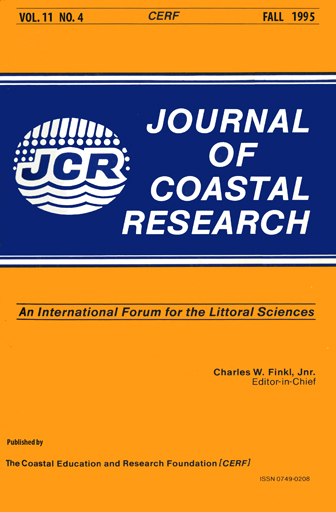Geochronology of Quaternary Coastal Plain Deposits, Southeastern Virginia, U.S.A.
Keywords:
Stratigraphy, Atlantic coastal plain, sea-level change, amino acid racemization, electron spin resonance.Abstract
Three clusters of amino acid enantiomeric values (or aminozones) are defined using molluscan fossils from the late Quaternary marine units exposed in Gomez Pit, in the southeastern Virginia coastal plain. Mean alloisoleucine/Isoleucine (A/I) values for two aminozones (IIa: 0.17 ± 0.02; IIc: 0.32 ± 0.02) are superposed, show consistent relation to lithologic units, and are used to define local alloformations. A third aminozone (IId: A/I = 0.46 ± 0.04) cannot be used to define a local alloformation because all IId mollusks appear to have been reworked into younger (IIc) lithologic units at the Gomez Pit site. U-Th age estimates on corals, and electron spin resonance (ESR) age estimates on fossil mollusks are used to calibrate aminozone IIa. Combined U-Th, ESR, and amino acid enantiomeric data indicate a Stage 5 (80 to 130 ka) age for aminozone IIa. Age estimates for older aminozones IIc and IId are calculated using aminozone IIa calibration applied to kinetic models describing diagenetic racemization. Using this approach, age range estimates for aminozone IIc (approximately 250 to 400 ka), and aminozone IId (approximately 500 to 800 ka) are proposed. Aminostratigraphic interpretations are compared with other geomorphic and stratigraphic studies of the southern Chesapeake Bay region. Deposition of the "IIa alloformation" is correlative with parts of the Tabb Formation (Sedgefield Member), or parts of the Norfolk Formation, evolution of the Nassawadox spit (lower Delmarva Peninsula), and filling of the Eastville paleochannel of the ancestral Susquehanna River. The "IIc alloformation" is correlative with the Shirley Formation (on the York-James Peninsula) or Great Bridge Formation. Aminozone IId (in-place elsewhere in the region) is correlative with the Shirley Formation (on the Rappahannock River), evolution of the Omar-Accomack spit, and filling of the Exmore paleochannel of the ancestral Susquehanna River.


